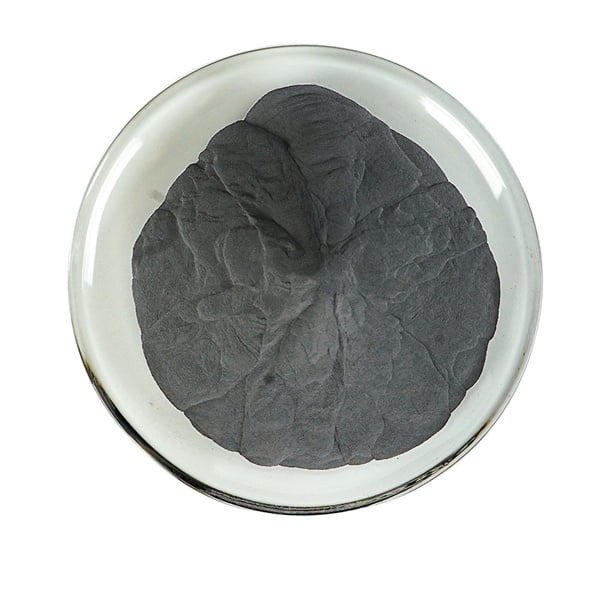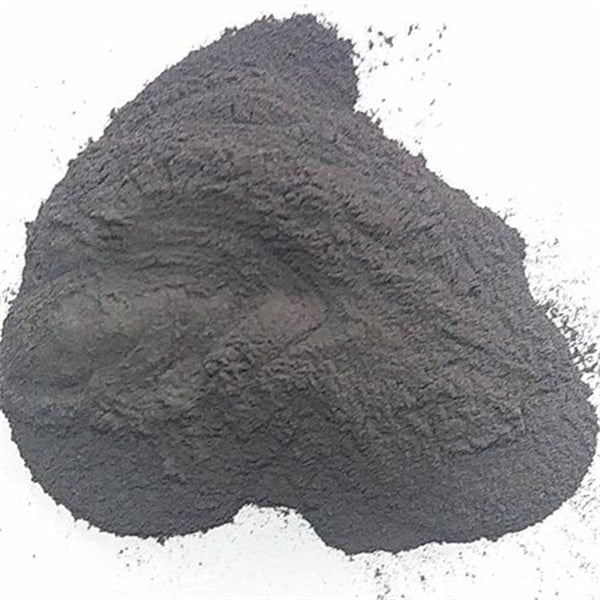Anteckningar om MIM-teknik
Innehållsförteckning
Formsprutning av metall (MIM) är en revolutionerande tillverkningsprocess som överbryggar klyftan mellan traditionell metallbearbetning och formsprutning av plast. Tänk dig att skapa invecklade metalldelar som nästan har nätform med samma snabbhet och kostnadseffektivitet som plastgjutning - det är det magiska med MIM. Men innan vi går in på djupet, låt oss ta reda på det viktigaste.
Vad är MIM och hur fungerar det?
Tänk på MIM som ett kulinariskt äventyr. Du börjar med en finfördelad metall, som mjölet i ditt favoritkakrecept. Metallpulvret fungerar som huvudingrediens och dess specifika egenskaper avgör den slutliga detaljens egenskaper. Vi kommer att utforska olika metallpulver senare. Därefter blandas ett bindemedelsmaterial, liknande de våta ingredienserna i din deg, in. Bindemedlet håller ihop metallpartiklarna under gjutningsprocessen.
Den resulterande blandningen, som kallas råmaterial, sprutas sedan in i en formhålighet under högt tryck, ungefär som att pressa kakdeg genom en spritspåse. När den har svalnat har du en "grön" del, bräcklig och fortfarande innehållande bindemedlet. Det är här analogin brister lite. Den gröna delen genomgår en avbindningsprocess, där bindemedlet avlägsnas noggrant genom en kombination av värme och ofta ett kemiskt lösningsmedel. Tänk dig att du försiktigt plockar ut chokladbitarna ur din kakdeg och bara lämnar kvar mjölstrukturen.
Slutligen går detaljen in i sintringsfasen. Tänk på detta som att baka din "avbinderade" deg. Höga temperaturer gör att metallpartiklarna binds samman och skapar en nästan nätformad metallkomponent med hög densitet.

Avslöjar lockelsen med MIM: En titt på fördelarna
MIM har en rad fördelar som gör det till ett övertygande val för olika branscher. Här är några viktiga fördelar som kanske kommer att övertyga dig:
- Komplexa geometrier: Till skillnad från traditionell maskinbearbetning är MIM utmärkt för att producera invecklade former med snäva toleranser. Tänk dig att tillverka kugghjul med känsliga tänder eller invecklade medicinska implantat - MIM hanterar dessa geometrier med lätthet och sparar in på kostsam efterbearbetning.
- Höga produktionstakter: MIM briljerar vid tillverkning av stora volymer. Jämfört med att bearbeta varje del individuellt ökar MIM:s snabba gjutningsprocess produktionshastigheten avsevärt, vilket leder till snabbare leveranstider och potentiellt lägre kostnader.
- Materialets mångsidighet: MIM är inte begränsat till en enda metall. Ett stort antal metallpulver, vart och ett med unika egenskaper, kan användas. Detta gör det möjligt att skräddarsy detaljens styrka, korrosionsbeständighet och andra egenskaper efter specifika applikationsbehov.
- Dimensionell noggrannhet: MIM-detaljer har en imponerande måttnoggrannhet, vilket minimerar behovet av omfattande efterbearbetning. Detta leder till en jämn kvalitet på detaljerna och minskat produktionsspill.
- Kostnadseffektivitet: För högvolymsproduktion av komplexa detaljer kan MIM vara ett kostnadseffektivt alternativ till traditionell bearbetning. Det minskade behovet av maskinbearbetning och minimerat materialspill bidrar till dess ekonomiska attraktionskraft.
Metallpulver för MIM
Låt oss nu fördjupa oss i metallpulvrets värld, MIM:s hjärta och själ. Det specifika pulver som väljs påverkar avsevärt den slutliga detaljens egenskaper. Här får du en inblick i några populära alternativ:
Pulver av rostfritt stål:
- 316L: Det mest använda rostfria MIM-stålet har utmärkt korrosionsbeständighet och biokompatibilitet, vilket gör det idealiskt för medicinska implantat och utrustning för livsmedelsbearbetning.
- 17-4PH: Ett höghållfast, utskiljningshärdbart rostfritt stål som är perfekt för tillämpningar som kräver exceptionell mekanisk styrka, t.ex. komponenter inom flyg- och rymdindustrin.
Pulver av låglegerat stål:
- 46XX-serien: Dessa mångsidiga låglegerade stål erbjuder en bra balans mellan styrka, seghet och prisvärdhet, vilket gör dem lämpliga för tillämpningar inom fordonsindustrin och allmän verkstadsindustri.
Pulver för verktygsstål:
- H13: Detta höglegerade verktygsstål har utmärkt slitstyrka, vilket gör det idealiskt för formar och stansar som används i metallformningsprocesser.
Nickelbaserade legeringspulver:
- Inconel 625: Denna högpresterande nickelbaserade superlegering erbjuder exceptionellt motstånd mot höga temperaturer och korrosion, vilket gör den perfekt för krävande applikationer som jetmotorer och kemisk processutrustning.
Andra metallpulver:
MIM är inte begränsat till dessa alternativ. Andra material som koppar, titan och volfram kan också användas, vilket utökar de potentiella tillämpningarna för denna mångsidiga teknik.
Faktorer som påverkar materialval
Välja rätt metallpulver för din MIM projekt kräver noggrant övervägande av flera faktorer:
- Önskade egenskaper: Vilka är de kritiska egenskaperna för din detalj? Styrka, korrosionsbeständighet, värmetolerans - varje metallpulver erbjuder en unik blandning av egenskaper.
- Geometrins komplexitet: Vissa pulver flyter bättre än andra, vilket påverkar möjligheten att åstadkomma komplicerade former.
- Överväganden om kostnader: Materialkostnaderna kan variera avsevärt.
- Delstorlek: Pulverpartikelstorleken kan påverka den minsta uppnåeliga funktionsstorleken i den slutliga detaljen.
- Krav på efterbearbetning: Vissa metallpulver kräver ytterligare behandlingar efter sintringen, t.ex. infiltration för ökad hållfasthet eller värmebehandling för förbättrade mekaniska egenskaper. Dessa ytterligare steg kan påverka den totala kostnaden och produktionstiden.
Tillämpningar av MIM-teknik
MIM:s mångsidiga egenskaper har öppnat dörrar för dess tillämpning inom ett brett spektrum av branscher. Här är några framträdande exempel:
- Medicintekniska produkter: MIM:s förmåga att tillverka komplicerade, biokompatibla delar gör den idealisk för tillverkning av medicinska implantat som ledproteser, stentar och kirurgiska instrument.
- Flyg- och rymdindustrin samt försvarsindustrin: Det höga förhållandet mellan styrka och vikt och den höga värmebeständigheten hos vissa MIM-material gör dem lämpliga för komponenter inom flygindustrin, t.ex. turbinblad och motordelar. Dessutom kan MIM användas för att tillverka komplexa skjutvapenkomponenter med snäva toleranser.
- Fordon: MIM används i fordonstillämpningar som växlar, transmissionskomponenter och delar till bränslesystemet tack vare sin förmåga att skapa komplicerade former med hög produktionshastighet.
- Konsumentelektronik: Små, komplexa komponenter som används i elektroniska apparater, t.ex. kontakter och höljen, kan tillverkas effektivt med hjälp av MIM.
- Telekommunikation: MIM används för att tillverka komplicerade delar till telekommunikationsutrustning på grund av dess förmåga att uppnå snäva toleranser och måttnoggrannhet.
Fördelar och begränsningar med MIM
Även om MIM har en rad övertygande fördelar är det viktigt att erkänna dess begränsningar för att fatta välgrundade beslut. Här är ett balanserat perspektiv:
Fördelar:
- Komplexa geometrier: Som tidigare nämnts är MIM utmärkt för att producera komplicerade former, vilket minskar behovet av komplex efterbearbetning.
- Höga produktionstakter: För högvolymproduktion erbjuder MIM betydande fördelar när det gäller hastighet och effektivitet jämfört med traditionella bearbetningsmetoder.
- Materialets mångsidighet: Möjligheten att använda ett brett utbud av metallpulver gör det möjligt att skräddarsy detaljer efter specifika applikationsbehov.
- Dimensionell noggrannhet: MIM-detaljer uppnår en imponerande måttnoggrannhet, vilket minimerar behovet av omfattande efterbearbetning.
Begränsningar:
- Begränsningar av delstorleken: Det finns begränsningar för den maximala storleken på de delar som kan tillverkas med MIM. Mycket stora eller skrymmande komponenter kanske inte lämpar sig för denna process.
- Ytfinish: MIM-detaljer har vanligtvis en grövre ytfinish jämfört med maskinbearbetade komponenter. Detta kan kräva ytterligare efterbehandlingsprocesser beroende på applikationskraven.
- Materialegenskaper: Det finns en mängd olika metallpulver, men vissa egenskaper som kan uppnås med traditionella processer kanske inte kan återskapas fullt ut med MIM. Att uppnå de allra högsta hållfasthetsnivåerna i vissa metaller kan till exempel vara en utmaning med MIM.
- Utvecklingskostnader: Att sätta upp en MIM-produktionslinje kan innebära betydande initiala kostnader. Detta kan vara en faktor att ta hänsyn till i projekt med lägre produktionsvolymer.
Välja MIM för ditt projekt
MIM är ett kraftfullt verktyg för tillverkning av komplexa metalldelar. Men för att avgöra om MIM är rätt val för ditt projekt bör du ta hänsyn till dessa faktorer:
- Delkomplexitet: Om din detalj kräver komplicerade former med snäva toleranser kan MIM vara ett utmärkt alternativ.
- Produktionsvolym: För högvolymsproduktion kan MIM erbjuda betydande kostnads- och tidsbesparingar jämfört med traditionell bearbetning.
- Materialkrav: Utvärdera de kritiska egenskaper som behövs för din detalj och se till att det valda metallpulvret kan leverera dem.
- Projektets budget: Överväg kostnadseffekterna av MIM, inklusive potentiella initiala utvecklingskostnader och krav på efterbearbetning.

VANLIGA FRÅGOR
Q: Vilka är fördelarna med MIM jämfört med traditionell maskinbearbetning?
MIM erbjuder flera fördelar, bland annat möjligheten att tillverka komplexa geometrier, höga produktionshastigheter och mångsidiga material. Dessutom kan MIM uppnå god måttnoggrannhet, vilket potentiellt kan minska behovet av omfattande efterbearbetning.
Q: Vilka är begränsningarna med MIM?
Det finns begränsningar för den maximala detaljstorlek som kan uppnås med MIM. Dessutom har MIM-delar vanligtvis en grövre ytfinish jämfört med maskinbearbetade komponenter. Materialegenskaper som kan uppnås med MIM kan också skilja sig något från dem som kan uppnås med traditionella processer.
F: Vilka typer av metallpulver kan användas i MIM?
Ett brett spektrum av metallpulver kan användas i MIM, inklusive rostfritt stål, låglegerat stål, verktygsstål, nickelbaserade legeringar och andra. Det specifika pulver som väljs har stor betydelse för den slutliga detaljens egenskaper.
Q: Är MIM lämpligt för lågvolymsproduktion?
MIM kan vara ett bra alternativ för högvolymsproduktion, men för lågvolymsprojekt kan de initiala utvecklingskostnaderna vara större än fördelarna. I sådana fall kan traditionell maskinbearbetning vara mer lämplig.
Framtiden för MIM-tekniken:
MIM-tekniken utvecklas ständigt, med framsteg inom material, bearbetningstekniker och designprogramvara. Här är några spännande möjligheter som ligger i horisonten:
- Nya metallpulver: Utvecklingen av nya metallpulver med förbättrade egenskaper som högre hållfasthet, bättre korrosionsbeständighet eller till och med möjligheten att skriva ut funktionellt graderade delar kommer att utöka användningsområdena för MIM.
- Integration av additiv tillverkning: Genom att kombinera MIM med additiva tillverkningstekniker som 3D-printing kan man skapa ännu mer komplexa geometrier och potentiellt personanpassa delar.
- Förbättringar av hållbarheten: Att minska avfallet och minimera energiförbrukningen under MIM-processen är pågående forskningsområden. Hållbara metoder kommer att bli allt viktigare i framtiden.
Slutsats
MIM-tekniken erbjuder en övertygande lösning för tillverkning av komplexa metalldelar med nära nätform och hög produktionseffektivitet. Genom att förstå dess möjligheter, begränsningar och designöverväganden kan du fatta välgrundade beslut om dess lämplighet för ditt projekt. I takt med att MIM-tekniken fortsätter att utvecklas kommer den att spela en ännu viktigare roll i utformningen av metalltillverkningens framtid.
Dela på
MET3DP Technology Co, LTD är en ledande leverantör av lösningar för additiv tillverkning med huvudkontor i Qingdao, Kina. Vårt företag är specialiserat på 3D-utskriftsutrustning och högpresterande metallpulver för industriella tillämpningar.
Förfrågan för att få bästa pris och anpassad lösning för ditt företag!
Relaterade artiklar

Högpresterande segment för munstycksvingar: Revolutionerande turbineffektivitet med 3D-utskrift i metall
Läs mer "Om Met3DP
Senaste uppdateringen
Vår produkt
KONTAKTA OSS
Har du några frågor? Skicka oss meddelande nu! Vi kommer att betjäna din begäran med ett helt team efter att ha fått ditt meddelande.

Metallpulver för 3D-printing och additiv tillverkning
FÖRETAG
PRODUKT
cONTACT INFO
- Qingdao City, Shandong, Kina
- [email protected]
- [email protected]
- +86 19116340731
















